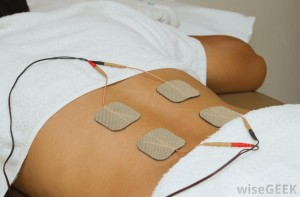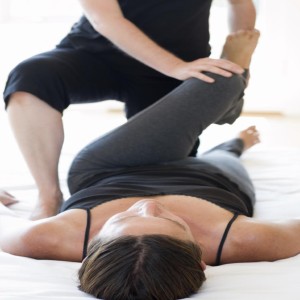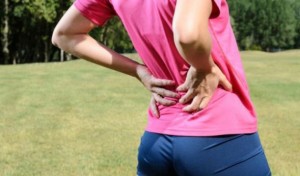 TENS stands for Transcutaneous Electrical Nerve Stimulation. A TENS machine works by sending electrical pulses across the surface of the skin and along the nerve strands. It is a modality that can be safely used on multiple conditions.
TENS stands for Transcutaneous Electrical Nerve Stimulation. A TENS machine works by sending electrical pulses across the surface of the skin and along the nerve strands. It is a modality that can be safely used on multiple conditions.
TENS therapy can be used to treat muscle, joint, or bone problems. Some of these conditions include: bursitis, arthritis, tendonitis, carpal tunnel, sports injuries, neck pain, shoulder pain, and back pain.
When the body is injured, it responds to pain by “muscle guarding”. Muscle guarding is a protective response – the bodies natural defense in attempting to immobilize the painful area by tightening the muscles. Muscle guarding impairs circulation in the injured and surrounding area; but can be treated through induced relaxation of the muscle. TENS therapy can help break this pain cycle and aid in the normal healing process.
Transcutaneous electrical nerve stimulation uses low-voltage electrical current for pain relief. The electricity from the electrodes stimulates the nerves in an affected area and sends signals to the brain that block the normal pain signals. TENS unit aims to stimulate the sensory nerves, and by so doing, activate specific natural pain relief mechanisms.
When the TENS modality is switched on, the patient will experience a mild, pins and needles or tingling sensation where ever the TENS pad has been placed on the body. This electrical stimulation of the nerves may also help the body to produce natural painkillers called endorphins, which help block the perception of pain.
Transcutaneous electrical nerve stimulation sends a painless electrical current to specific nerves. The mild electrical current generates heat to relieve stiffness, improve mobility, and relieve pain.
The TENS modality is used by both Physiotherapist and Chiropractors and is usually used in a combination of treatments such as manual manipulation, cryo & thermal therapy and topical analgesic ointments.
If you should have any questions about TENS, please call our clinic at 250-382-0018 to discuss if this treatment is right for you.





